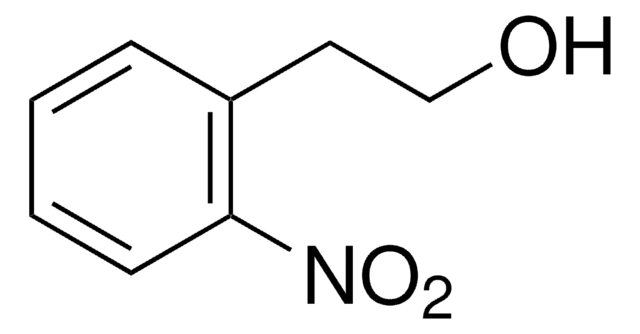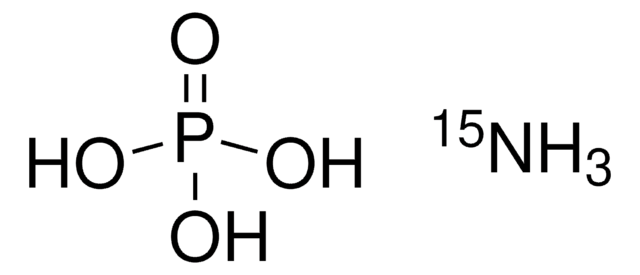204005
Ammoniumdihydrogenphosphat
99.999% trace metals basis
Synonym(e):
Ammoniumphosphat, einbasig, mono-Ammoniumphosphat, Ammoniumbiphosphat, Ammoniumdihydrogenphosphat
About This Item
Empfohlene Produkte
Qualitätsniveau
Assay
99.999% trace metals basis
Form
crystalline
Verunreinigungen
≤15.0 ppm Trace Metal Analysis
mp (Schmelzpunkt)
190 °C (dec.) (lit.)
Anwendung(en)
battery manufacturing
SMILES String
N.OP(O)(O)=O
InChI
1S/H3N.H3O4P/c;1-5(2,3)4/h1H3;(H3,1,2,3,4)
InChIKey
LFVGISIMTYGQHF-UHFFFAOYSA-N
Suchen Sie nach ähnlichen Produkten? Aufrufen Leitfaden zum Produktvergleich
Verwandte Kategorien
Allgemeine Beschreibung
Anwendung
- Als Vorstufe zur Herstellung von Kathodenmaterialien für Li-Ionen-Akkus zur Verbesserung der zyklischen Leistung.
- Als Elektrolytzusatz in wiederaufladbaren Batterien zur Verbesserung der ionischen Leitfähigkeit oder zur Reduzierung des Risikos von Seitenreaktionen im Elektrolyt.
- Zur Herstellung schwer entflammbarer Polymerverbundwerkstoffe.
Lagerklassenschlüssel
13 - Non Combustible Solids
WGK
WGK 1
Flammpunkt (°F)
Not applicable
Flammpunkt (°C)
Not applicable
Persönliche Schutzausrüstung
Eyeshields, Gloves, type N95 (US)
Hier finden Sie alle aktuellen Versionen:
Besitzen Sie dieses Produkt bereits?
In der Dokumentenbibliothek finden Sie die Dokumentation zu den Produkten, die Sie kürzlich erworben haben.
Kunden haben sich ebenfalls angesehen
Unser Team von Wissenschaftlern verfügt über Erfahrung in allen Forschungsbereichen einschließlich Life Science, Materialwissenschaften, chemischer Synthese, Chromatographie, Analytik und vielen mehr..
Setzen Sie sich mit dem technischen Dienst in Verbindung.





